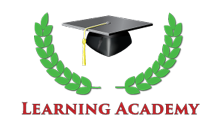
- Description
- Objectives
- Outline
- Materials
- Certification
- System Requirements
- Watch a Demo
This Clinical Medical Assistant course provides knowledge for working closely with patients and physicians.
Clinical Medical Assistant
Have you thought about working with other professionals providing health care to patients? Are you a good team player? As a Clinical Medical Assistant you will work closely with patients and physicians; take vital signs, interview patients, record patient information, and provide point-of-care testing. Clinical Medical Assistants are projected to be among the fastest growing occupations in the next 5 years. Our course will also provide you with the latest HIPAA regulations, the Electronic Health Record, and how to care for special populations. Completing our Clinical Medical Assistant program will help you prepare for a successful and rewarding career in the growing healthcare industry!
Prerequisite: Solid knowledge of Medical Terminology and Anatomy & Physiology. If you do not know Medical Terminology or Anatomy & Physiology you can take our Medical Terminology course.
Medical Terminology: An Overview
Medical terms can be complex, confusing and difficult to memorize. By understanding the origins of the words and their building blocks - such as roots, prefixes and suffixes, the terminology will make sense and be easier to use in everyday settings such as doctor’s offices, labs, pharmacies, hospitals and clinics. This course is structured to help you break down commonly used terms and understand how medical terminology relates to body parts, diseases and procedures.
** Course Subject to Change.
Clinical Medical Assistant
After completing this course, you should be able to:
- Define the daily procedures performed by the physician and medical assistant
- Identify the proper guidelines of obtaining vital signs and patient information
- State the methods of the administration of medication and intravenous therapy
- Define the various guidelines for performing phlebotomy and microbiology charges
- Identify the standard guidelines for OSHA, sterilization and disinfection
Medical Terminology: An Overview
After completing this course, you should be able to:
- Identify the foundation of medical terminology
- List functions of major body systems such as skeletal, muscular and sensory
- Recall how your blood vessels, lymph nodes and heart work together
- Recognize the fundamentals of the body’s endocrine system, central nervous system and the male and female reproductive systems
Clinical Medical Assistant
Clinical Medical Assistant Module 1
Keeping up with Medical Standards
- Introduction to the Medical Record
- Types of Medical Records
- Documentation in the Medical Record
- Medical Asepsis and the OSHA Standard
- Microorganisms and Medical Asepsis
- OSHA Bloodborne Pathogens Standard
- Regulated Medical Waste
- Bloodborne Diseases
Clinical Medical Assistant Module 2
Sterilization, Disinfection and Taking Vital Signs
- Introduction to Sterilization and Disinfection
- Definition of Terms
- Hazard Communication Standard
- Procedures for Disinfection, Sanitation and Sterilization
- Introduction to Vital Signs
- Measuring Body Temperature
- Taking a Pulse
- Calculating Respirations
- Performing Pulse Oximetry
- Measuring Blood Pressure
Clinical Medical Assistant Module 3
The Physical Examination
- Application of Body Mechanics
- Inspection
- Palpation
- Percussion
- Structure of the Eye
- Assessment of Color Vision
- Structure of the Ear
- Assessment of Hearing Acuity
- Hearing Acuity Tests
Clinical Medical Assistant Module 4
Promoting Healing and Obstetrics and Gynecology
- Introduction to Tissue Healing
- Local Application of Heat and Cold
- Cast, Splints, and Braces
- Measuring and Instructing Patients with Ambulatory Aids
- Introduction to the Gynecologic Exam
- Breast and Pelvic Examinations
- Vaginal Infections
- Prenatal Care
- Obstetrics
- Postpartum Visits
Clinical Medical Assistant Module 5
Pediatrics and Minor Office Surgery
- Pediatric Examination
- Carrying the Infant
- Pediatric Blood Pressure Measurement
- Collection of a Urine Specimen
- Pediatric Injections
- Instruments Used in Minor Office Surgery
- Sterile Dressing Change
- Assisting with Minor Office Surgery
- Sutures and Bandaging
- Administration of Medical and Intravenous Therapy
Clinical Medical Assistant Module 6
Cardiopulmonary Procedures and Reproductive Health
- Electrocardiography
- Structure of the Heart
- Cardiac Cycle
- Cardiac Dysrhythmias
- Colon Procedures
- Blood in the Stool
- Male and Female Reproductive Health
- Sigmoidoscopy
- Colonoscopy
Clinical Medical Assistant Module 7
Diagnostic Imaging and Clinical Laboratory
- Introduction to Radiology
- Introduction to Diagnostic Imaging
- Fluoroscopy
- Ultrasonography
- Computed Tomography
- Purpose of Laboratory Testing
- Types of Clinical Laboratories
- Laboratory Reports
Clinical Medical Assistant Module 8
Urinalysis and Phlebotomy
- Composition of Urine
- Analysis of Urine
- Rapid Urine Cultures
- Urine Pregnancy Test
- Serum Pregnancy Test
- Venipuncture
- Vacuum Tube Method of Venipuncture
- Skin Puncture Devices
- Microcollection Devices
Clinical Medical Assistant Module 9
Hematology and Blood Chemistry
- Components and Functions of Blood
- Hemoglobin Determination
- Hematocrit
- White and Red Blood Cell Counts
- Immunology
- Blood Chemistry
- Blood Glucose
- Managing Diabetes
- Glucose Meters
Clinical Medical Assistant Module 10
Medical Microbiology and Nutrition
- Introduction to Microbiology
- Microorganisms and Diseases
- Microbiologic Specimen Collection
- Culture and Sensitivity Testing
- Nutrients
- Carbohydrates
- Fat
- Protein
- Vitamins
- Minerals
Clinical Medical Assistant Module 11
Emergency Preparedness and Medical Procedures
- Introduction to Disaster and Emergency Planning
- Psychological Effects of Serious Emergencies
- Emergency Action Plan
- Fire Prevention Plans
- Office Crash Cart
- Emergency Medical Services System
- First Aid Kit
- OSHA Safety Precautions
Medical Terminology: An Overview
Medical Terminology: An Overview Module 1
Prefixes, Roots, and Suffixes
Module one will take a look at the basics of body anatomy and organization, the foundation of medical terminology and why words are structured the way they are. We will look at the relationship between Greek and Latin roots, prefixes, suffixes and everyday pronunciation.
- History of Medical Terminology
- Applying Different Rules of Pluralization
- Deconstructing Medical Words
- Pronunciation and Everyday Usage
- Organization of the Body
Medical Terminology: An Overview Module 2
Bones, Muscles, Skin and Sensory
Module two discusses the major body systems such as skeletal, muscular and sensory and their root terminology. We will cover how systems function together and how they correlate to the overall health of the human body, as well as pathology, diseases and conditions that affect these systems.
- Terminology of the Skeletal, Muscular, Integumentary and Sensory Systems
- Skeletal Diseases and Pathology
- Classes and Types of Muscles
- Skin Layers and Conditions
- Anatomy of Eyes, Ears and Nose
Medical Terminology: An Overview Module 3
Heart, Lungs and Gastrointestinal
Module three covers how your blood vessels, lymph nodes and heart all work together, as well as how the respiratory system and organs of the digestive system function. We will also recognize the proper way to diagnose gastrointestinal and respiratory conditions according to the specific body part.
- The Cardiovascular and Lymphatic Systems
- Veins, Arteries and Blood Flow
- Organs of the Digestive System
- Gastrointestinal Diseases and Pathology
- Respiratory Terminology and Diagnostic Tests
Medical Terminology Module 4
Hormones, Nerves, Urinary and Reproductive
Module four discusses the fundamentals of the body’s endocrine system, the central nervous system and the male and female reproductive systems. We will also cover easy methods and simple phrases for memorizing medical terms through study guides and tips and tricks.
- Endocrine System and Hormone Functions
- Parts of the Central Nervous System
- Urinary Tract Functions
- Male Reproductive Systems
- Female Reproductive Systems
Ed4Career is committed to being both environmentally conscious and making it easier for you to study! We’re making your education mobile! All of our textbooks are now provided as eTextbooks*. You can access them on your laptop, tablet, or mobile device and can study anytime, anywhere.
The move away from physical books to eTextbooks means you get the latest, most up-to-date version available. This also makes your training more accessible, so you can study anywhere you have your phone or tablet. The best part is that all materials are included in your training cost so there are NO extra fees for books!**
*A few courses still have physical materials.
Clinical Medical Assistant
Upon successful completion of our Clinical Medical Assistant course, students will be prepared for an entry-level position as a Clinical Medical Assistant in a health care center or doctor’s office and will be prepared to sit for the NHA national certification exam to become a Certified Clinical Medical Assistant (CCMA).** Certification exams are not included in the cost of the course.**
Internet Connection
- Broadband or High-Speed - DSL, Cable, and Wireless Connections
*Dial-Up internet connections will result in a diminished online experience. Classroom pages may load slowly and viewing large audio and video files may not be possible.
Hardware Requirements
- Processor - 2GHz Processor or Higher
- Memory - 1 GB RAM Minimum Recommended
PC Software Requirements
- Operating Systems - Windows 7 or higher
- Microsoft Office 2013 or higher. Also, you could use a general Word Processing application to save and open Microsoft Office formats (.doc, .docx, .xls, .xlsx, .ppt, .pptx)
- Internet Browsers - Google Chrome is highly recommended
- Cookies MUST be enabled
- Pop-ups MUST be allowed (Pop-up Blocker disabled)
- The Kindle Reader App or VitalSource Bookshelf App are needed for many of our courses (No special equipment needed. This can be downloaded for FREE onto your computer.)
- PowerPoint Viewer (if you do not have PowerPoint)
- Adobe PDF Reader
- QuickTime, Windows Media Player &/or Real Player
MAC Software Requirements
- Operating Systems - Mac OS x 10 or higher with Windows
- Mac office programs or a Word Processing application to save and open Microsoft Office formats (.doc, .docx, .xls, .xlsx, .ppt, .pptx)
- Internet Browsers- Google Chrome is highly recommended
- Cookies MUST be enabled
- Pop-ups MUST be allowed (Pop-up Blocker disabled)
- The Kindle Reader App or VitalSource Bookshelf App are needed for many of our courses (No special equipment needed. This can be downloaded for FREE onto your computer.)
- PowerPoint Viewer (if you do not have PowerPoint)
- Adobe PDF Reader
- Apple QuickTime Media Player


